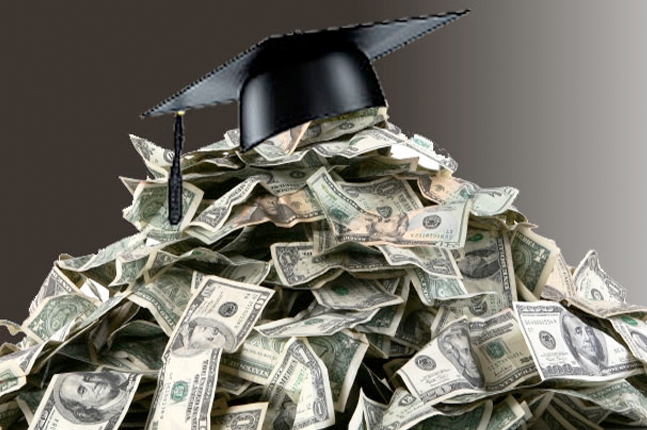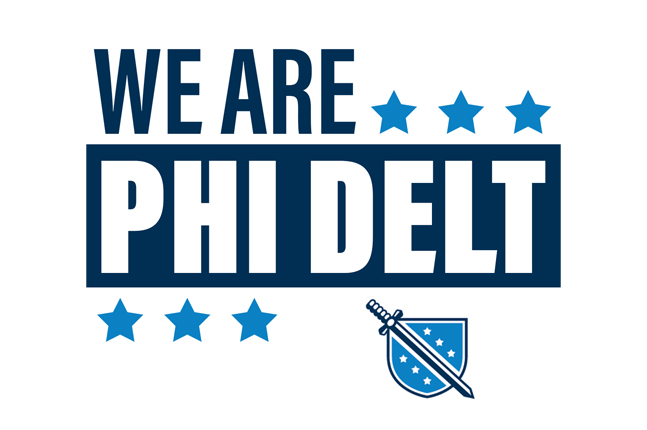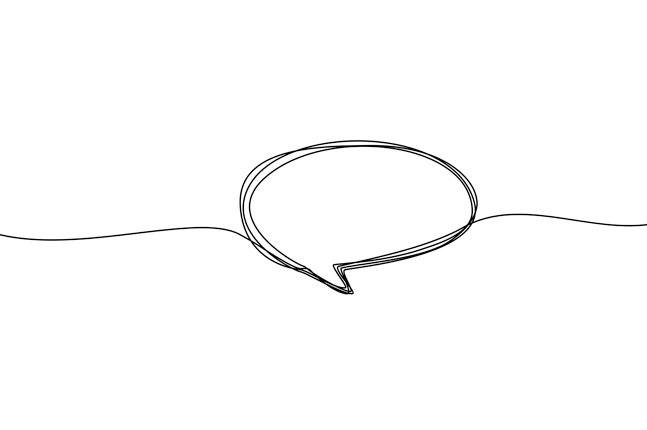By Sharon Young, Communications Intern
It’s no secret that graduating college is no easy task. No matter the college or university, undergraduates across the world are completing required courses, submitting assignments, writing papers, and taking exams; all undertakings that will push them towards receiving those coveted diplomas. Acquiring a job consequently follows graduation. There are a number of questions to face throughout this process as well, one namely being “What am I going to do with the rest of my life?” Luckily, when it comes to a career, just because it’s the first job doesn’t mean it has to be the last. There is always the chance to change paths. One thing however, that cannot be changed or escaped that daunts 71% of graduating college students, is student loan debt.
Nothing screams, “welcome to the real world,” like managing the stress of starting or looking for a job, moving away from what was your “home” for the past four years, and on top of that dealing with the looming student debt that you’ve likely piled up since the first day of freshman year. According to Project on Student Debt, seven in 10 college seniors who graduated last year had student loan debt with an average of $29,400 per borrower. While paying off student loans may seem like an uphill battle now, there are three key steps that every graduate with debt should follow in order to pay it off…and quickly.
Step 1: Assess all of your debt
From futons to physics books, you’ve paid for a lot over the course of your undergraduate experience and now it’s time to evaluate all of these expenses. There are many types of student loans, and debt can take many forms. In terms of student loans, there are direct subsidized loans, direct unsubsidized loans, direct PLUS loans, direct consolidation loans, private loans, and even “parental loans.” In terms of debt aside from loans, recent graduates typically hold credit card debt. Because there are various types of debt the first essential step to tackling the problem is to list all of your student debts.
Categorize the importance of each account by assessing its interest rates. Typically student loan payment rates are around five percent to eight percent. Rates reset on July 1 of every year for new loans and loans that do not have fixed interest rates. Credit card interest is quite a bit steeper than that of student loans. With interest typically hovering at around 18 percent, credit cards make their money on the amount you spend on your credit card as well as the length of time it takes you to clear your outstanding balance.
List your loans from highest to lowest interest rates. It will probably list credit card debt first, followed by private loans and finally federal loans. This is the order in which you should tackle your debt in order to avoid the extra weight of heavy interest costs. Although you’ll want to pay off your highest interest loans first, still continue to keep in mind the payment due dates for all of your loans.
While listing all of your loans, take note of how payments will be made to each loan servicer. In terms of making payments, each loan servicer has their own payment process, so be sure to understand how and when they expect to receive your payments. Keep a list that records the lenders website URL and contact information, account login information, and lastly the current balance and interest rate on the loan.
Step Two: Make a Payment Plan
The last thing you want to do is live paycheck to paycheck while scrambling to make old and new payments post-graduation. One large mistake frequently made by borrowers is waiting to create a plan. Most lending services provide borrowers with a number of choices for paying back loans and it’s important to explore these options. There are four most frequently used options. The first possibility is the standard repayment, which consists of monthly payments of identical amounts. Graduated repayment allows the borrower to start with small payments. The payments will then gradually increase. The third most frequented option is income-sensitive repayment, which allows borrowers to make payments based on your monthly income. Lastly, if you are eligible, you may exercise extended repayments, which allows payments to be made over 25 years.
Each loan servicer may also have some type of grace period. The Office of Federal Student Aid, for example, provides all borrowers with a six-month grace period. This grace period begins the day you stop attending school and ends on the date upon which you will make your first payment. Be sure to check with your lending service to see if your loan interest is accumulating during the grace period timeframe. Remember, do not wait for your grace period to end to make a plan so that you don’t succumb to scrambling to write the first check. Each loan servicer should provide you with a clear payment schedule for you to utilize.
If you haven’t done so already, make a budget for your current expenses. Create a spreadsheet or utilize the tools at Mint.com showing what your weekly, monthly and yearly budget looks like. Record all of the money going out (expenses) and all of the money coming in (income). Although you may not consider it as important, budgeting for anything from public transportation to holiday gift spending is essential. Work all loan and debt payments into your budget and note what your minimal payment will be for each loan each month. While factoring your payments into your budget, calculate what it would take in order to put an extra $500 to $1,000 extra each month towards paying your student loans (again, this should be on top of the minimum payments you are already making). It is always to your benefit to pay off early than save more for later (plus interest).
Staying on track with your plan will relieve stress on your repayment process and also serve you well in terms of interest costs. Some borrowers may receive benefits from making timely payments. For example, some lenders who offer Stafford loans take two percent off your interest rate if you make your payments on time for four years. Be sure to ask your lender if they have a reward plan similar to this.
You can also save on interest if you set up a direct deposit system as your payment plan. If you set up your loan account to have payments automatically withdrawn from your checking account each month some lenders will give you 0.25 percent off of your loan’s interest rate. This can be a win-win for both you and your lender, making sure you pay and they receive payments on time. Keep in mind that with this option you may be running the risk of over-drafting on your checking account in the event that you have insufficient funds. Lastly, if your starting salary isn’t impressive to good ole’ Uncle Sam, you may be eligible to get a tax break on the interest you pay on your loans. The Student Loan Interest Deduction permits you to take a deduction of up to $2,500 with no need to itemize. To learn more about this opportunity see IRS Publication 970 for more information.
Utilize College Board’s student loan calculator to help you calculate how much your monthly loan payment should be.
Step Three: It’s not about how much you WANT to pay; it’s how much you CAN pay.
No one wants to be on a tight budget, but student debt will not disappear on its own and the best way to tackle it is as quickly as possible. Don’t be nervous to address what appears to be a mountain of student debt head on, the sooner you conquer this debt, the sooner you can put your money towards where you need it most. You can begin to build credit, save for a new car or house, and most importantly, save for (hopefully) an early retirement. The worst thing you could possibly do is ignore your debt which is why there are many ways to manage your student loans as well as make enough money to sustain a comfortable lifestyle post-graduation.
Don’t forget to continue to keep up with the debt you hold on your credit card. To encourage you to have a balance on your card, banks will typically offer you a low minimum payment on each bill but it is hugely important to pay your entire balance before the end of each month. It’s frightening, but if you never used your credit card again from this day forward and made only minimum payments it would take you roughly 29 years and $13,000 to pay off a current balance of just $4,000! Spend responsibly. If you consistently cannot pay off your credit balance every month you need to start adjusting your budget and the allocation of your spending money.
Struggling?
If you are struggling to make your payments, consider your options. It is no cost to you as the borrower to switch payment plans if need be. A simple example is the difference between opting for auto-debit (automatic withdrawal from your account) versus making a manual one-time payment per month. If you are constantly experiencing overdraft, this is one simple solution that can be made. Also, consider your long-term options. Typical payment schedules (depending upon the loan amount) extend over ten years or 120 payments. If this is unmanageable for you due to unemployment or other budgetary circumstances the government has some deferral and substitute payment plan options. Private loan servicers may also have flexibility with repayment options. Be cautious while exploring these alternative payment plans, because although the loan servicer may allow you to pay less per month, keep in mind that it will be costing you more in interest over time.
Lastly, consider consolidation if applicable. Consolidating loans means you’ll be able to combine all of your student loans into one monthly payment and possibly lower your interest rate (given that the rates are lower at the time of consolidation than when you originally borrowed). You only have one shot at consolidating your loans and you cannot undo your consolidation. Make sure that if you’re considering consolidating your loans you do so at a low interest rate and you’re sure you’ll be able to pay the lump sum. Look into consolidating while you are within your grace period since in any given year, the rates on Stafford loans are lower during this time.
Check out the helpful hints below:
Not every entry-level, post-grad job has an attractive starting salary. Luckily there are some fun and easy ways to rake in the cash to help you pay off your student loans:
Pick up some Odd Jobs:
- Babysitting – Pretty self-explanatory. Bouncing a baby on your lap for a couple of hours a week can add some serious cash to your pocket. Check out Sittercity.com or Care.com to find opportunities near you.
- Focus groups – Organizations in many major cities are in need of individuals to talk about and rate consumer products and services. You can find research groups that pay at findfocusgroup.com.
- Mock Jury Jobs – Lawyers need practice too! Look for “mock jury” on Craigslist or Google to get paid to participate in practice trials.
- Pet and plant sitting – People pay big bucks to have someone check on their plants and animals while they are out of town. Jump at the opportunity to pet or plant sit for people at the office who are going out of town.
- Airbnb – Ever thought about sharing your space? If you live in a convenient place in a big city you may consider registering your place on Airbnb. You’ll be able to earn fast cash by lending your residence to a visitor while you crash on a pals couch. Lucky for recent graduates, you’re not too far from the futon days to live out of a suitcase at friend’s place for a long weekend for a few hundred bucks!
- Odd Jobs – Apps like Field Agent and Gigwalk are great apps to use to find temporary positions. Also check out the “Temporary Gigs” section on Craigslist.
Manage the expenses in your life:
- Rent – Keep it low. Now is not the time for you to pay an exorbitant amount for the penthouse apartment. You won’t be in your first loft, house or apartment forever so think practically and focus on functionality and safety.
- No Relocation Package? – If you are more than 50 miles from your former home, you are eligible for a tax break to cover expenses that your employer doesn’t pick up. This moving deduction does have guidelines however. You must be employed for 39 out of the next 52 weeks, and although you can use it to cover the cost of lodging and a moving van, Uncle Sam won’t pick up your tab at Applebees or pay for those Taco Bell stops.
- Cable – Who uses cable anymore? Today, dealing with cable isn’t worth the hassle. You can likely find yourself a better deal on the Internet. Hello Hulu and hello Netflix!
- Gym – Join a running or free fitness group using Meetup.com or stream free workout videos online until you can afford that pricy gym membership. Also take a peek into your city’s parks and rec opportunities. Many communities have outdoor walking, running and hiking trails and some even have community gyms with discounted prices.
- Phone Bill – Data is likely where all of your money is going… turn off that Data Roaming and consider switching to a cheaper plan.
- Entertainment – Find free events in your city on apps or websites like Meetup and check into Living Social and Groupon for discounts on concerts and other events near you.
- Mystery Shopping – Getting paid to pretend to be a customer at a hotel, restaurant, entertainment venue, or shopping center doesn’t sound like a bad gig. Check out the Mystery Shopper Providers Association to find opportunities to go out, stay at a hotel, or have a meal for free in exchange for your review.
- Travel – Go outside your comfort zone and travel the road less traveled by…It will likely be cheaper. Pick a location with a good exchange rate and while you’re there eat locally, stay in hostels (check out hostelworld.com) or use Airbnb.com, and check Trip Advisor for cheaper attraction options (like ticket pre-ordering).
You don’t need to be plagued with your student loans or credit card payments until you’ve got grandchildren. Handle these payments by taking advantage of all of your options in order to become debt free by your thirty’s. Take care of your student debt now so you can start to build your personal finances as soon as possible. Find the balance between living lavishly and living paycheck to paycheck, so you can live comfortably while making strides towards clearing your debt.
Now, embrace your debt-free mindset, Class of 2014, and good luck!





